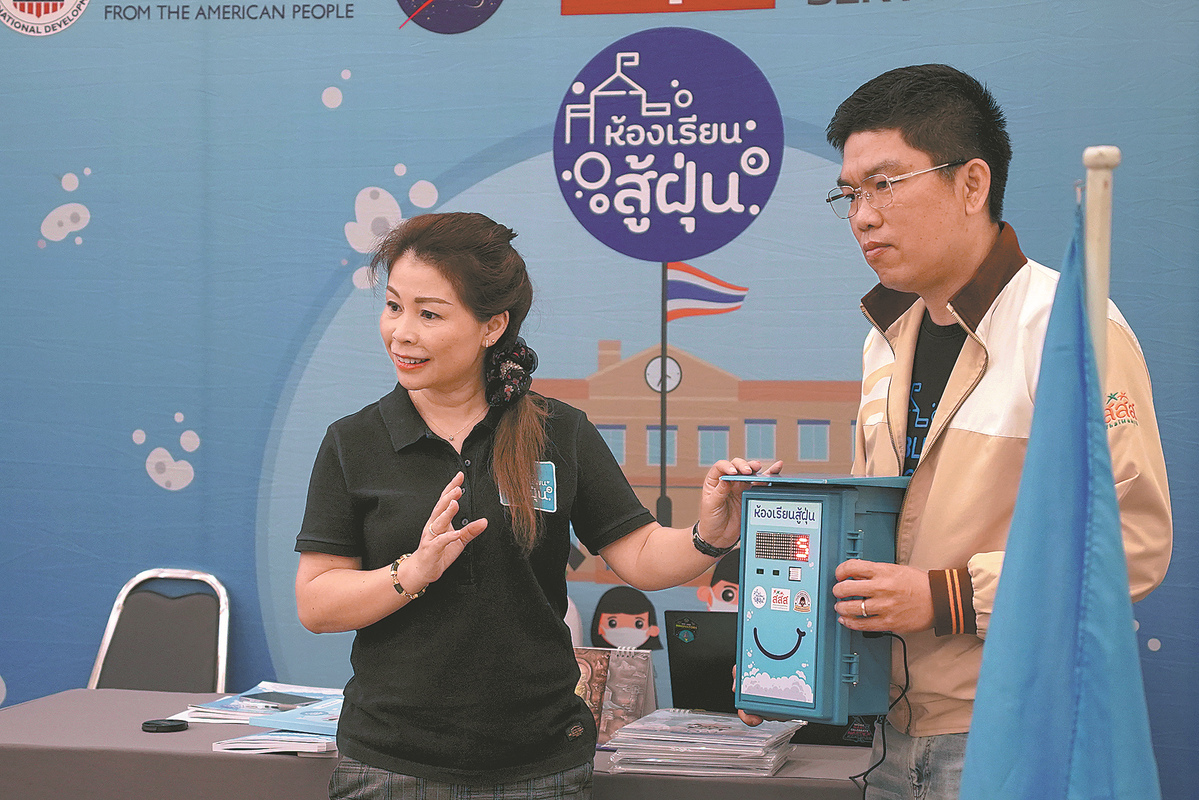School shows way in fighting air pollution in Thailand

Editor's note: Northern Thailand, which has witnessed severe haze pollution, is making all efforts to combat it. This page looks at how Chinese technology is helping the country's fight against smog.

Purifiers with Chinese technology help combat hazardous levels of smog
Mae Sai, the northernmost district of northern Thailand's Chiang Rai Province, is a major border crossing with Myanmar, famed for its lush hills. Doi Nang Non, which means "Mountain of the Sleeping Lady" in Thai, is one of the area's most notable mountains.
Apart from being a tourist attraction, Doi Nang Non also acts as an air quality indicator for the students of Banpafae-nongor-sansaimoon School in Mae Sai.
"The mountain is just a few kilometers away from the school and we taught students a simple way of recognizing air pollution levels using visibility between the school and Doi Nang Non," said Nion Sirimongkollertkul, from the Faculty of Engineering at the Rajamangala University of Technology Lanna in Chiang Rai.
"If they can barely see the mountain, the air quality is dangerous to human health and they should avoid staying outdoors," said Nion, who has studied air pollution for more than a decade.
Nion first became aware of air pollution in Thailand and its impact 16 years ago when she was pregnant. In the past decade, toxic haze pollution has become northern Thailand's most acute environmental disaster.
A haze is a light mist, caused by particles of water or dust in the air, which prevents one from seeing distant objects clearly.
The period between February and April is now referred to as "haze season".
In April last year, Chiang Mai — northern Thailand's cultural and tourist hub, and home to about 128,000 people — ranked as the world's most polluted city ahead of hot spots such as Lahore in Pakistan and Teheran in Iran, according to the Swiss air quality firm IQAir.
"There are multiple factors attributed to smog, including climate change and industrial emissions. But the biggest sources of toxic haze are forest fires and agricultural burning," Nion said.
"To save on costs, farmers remove the undergrowth by burning it for cultivating new crops such as sugar cane, maize, and even rice."
Somporn Chantara, a chemistry professor at Chiang Mai University, said that the dominance of PM2.5 — health-damaging particulate matter with a diameter of 2.5 micrometers or less — gives northern Thailand's smog its characteristic smoky smell.
Most of the smog in northern Thailand originates from agricultural burning in neighboring countries, including Myanmar and Laos, especially in the border areas of these countries, according to Nion.
"Taking Mae Sai as an example, it has been suffering severely from the haze even though agricultural burning has been strictly controlled in recent years. It's not a problem that can be solved from a single side," she added.


















